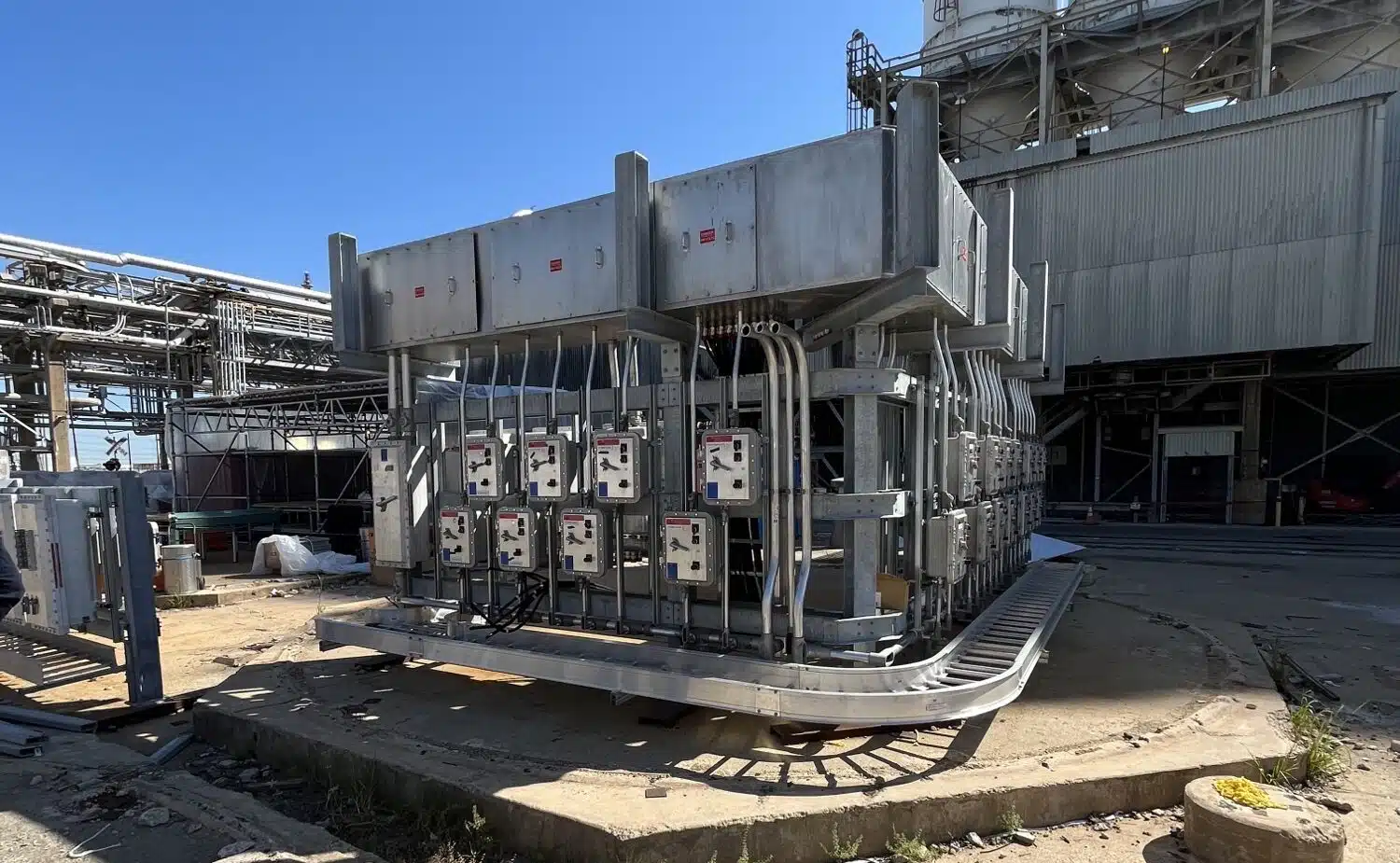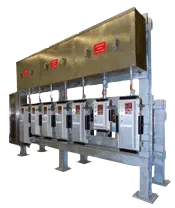
Introduction: When Safety Can’t Be Compromised
Explosion-proof and hazardous location (HazLoc) switchracks are not DIY projects or general contractor builds. They are highly specialized engineered systems that must conform to strict UL and IEEE manufacturing standards, not just NEC installation codes.
As the only Certified Eaton CAP partner in America Spike Electric Controls—a certified manufacturer of these systems—I’m writing this blog to educate readers on the critical differences between fabrication and installation, and provide a thorough technical overview to help ensure the correct practices are known, followed, and shared.
Fabrication vs. Installation: A Dangerous Confusion
| Task | Standards & Authority |
Who Can Do It? |
|
Manufacturing Switch Racks UL NNNY (Hazardous Location Certification), UL 1203 (Explosion-Proof and Flameproof Equipment), UL 698A (Industrial Control Panels in Hazardous Locations), **IEEE ** |
**UL-certified ** | Manufacturers only |
|
Installing Switchrack Equipment |
NEC (National Electrical Code) |
Licensed electrical contractors |
Clear line of responsibility and qualification when it comes to switchracks:
-
- UL/IEEE standards govern design engineering, structural integrity, component selection, environmental protection, and arc-flash safety of switchracks used in explosion-prone or classified environments.
- NEC standards govern the installation of pre-certified switchracks into facilities, ensuring wiring practices and grounding are safe and code-compliant.
The notion that “anyone” can build a UL- or IEEE-compliant switchrack is like saying “anyone” can build a firetruck or an aircraft black box. While licensed electrical contractors are fully qualified to install these systems following NEC requirements, they should not be building or fabricating the switchracks themselves. Over the years, we have observed a concerning trend: contractors attempting to assemble switchracks in the field without proper certification or adherence to UL hazardous location standards. These field-built, non-compliant racks often lack critical safety features and documentation, leading to major safety violations, failed inspections, and in some cases, dangerous on-site incidents. Manufacturing must remain in the hands of UL-certified facilities that specialize in explosion-proof and hazardous location assemblies.
Why This Matters: Real Risks in Hazardous Locations
Hazardous locations—classified as Class I, II, III, Division 1 or 2 by the NEC—include environments where gases, vapors, flammable dust, or fibers are present. These include:
-
- Petrochemical refineries
- Offshore drilling platforms
- Chemical manufacturing plants
- Grain processing silos
Using improperly fabricated equipment in these environments can result in:
-
- Electrical arcing and ignition
- Explosion propagation
- Loss of life and catastrophic facility damag
What Goes Into a Certified Switchrack?
Based on IEEE Industry Applications Magazine, a compliant hazardous location switchrack must meet stringent design and manufacturing considerations, including:
Structural & Environmental Engineering
-
- Designed with seismic zone ratings and wind bracing
- Built from galvanized or stainless steel with optional sunshades and custom enclosures
- Pre-configured for Class I Div 2 or Class I Div 1 standards depending on risk
Electrical System Requirements
-
- Full coordination and protective device settings (per IEEE 1584 arc flash requirements)
- Integrated bus systems, pretested at the factory, using UL-recognized copper bus bars
- Load circuits pre-wired and sealed, meeting conduit fill and seal-off standards (per NEC Article 501)
Functional Safety and Inspection
-
- Factory acceptance testing (FAT) before shipment
- Field inspection and re-verification (mechanical integrity, torques, seal pours, and labeling)
- NFPA 70E compliance for arc flash PPE and procedures
Long-Term Maintenance and Testing
-
- Periodic inspection per NFPA 70B and NETA ATS and MTS standards
- Infrared scanning of accessible bus work
- Cleaning and corrosion checks on flame paths and sealed enclosures.
Practical Benefits Over Modular or Conventional Substations
Switchracks offer:
-
- Faster lead times (3–6 months) vs. 6–24 months for conventional substations
- Preassembled, pretested units minimize field labor and eliminate risk of misassembly
- Smaller site footprint (as little as 200 ft²) vs. 5,000+ ft² needed for buildings in unclassified zones
- Improved future flexibility with expandable bus work
- Ability to add new modular switchracks in future expansions without requiring welding or field galvanizing
- Preserves original hazardous location classification and maintains hurricane wind ratings with engineered anchoring systems
- Lower cost (often 50% less) than modular or building-style substations
Final Word: Prioritize Compliance Over Convenience
If you’re sourcing explosion-proof or HazLoc switchracks, always go to:
-
- A UL-certified manufacturing facility.
- A company experienced in Hazardous Location compliance.
- A provider that can supply documentation on every component, from conduit seals to arc-flash studies.
👉 At Spike Electric, we specialize in exactly that.
We follow UL, IEEE, and HazLoc compliance every step of the way. If you’re ever unsure, ask a professional.


